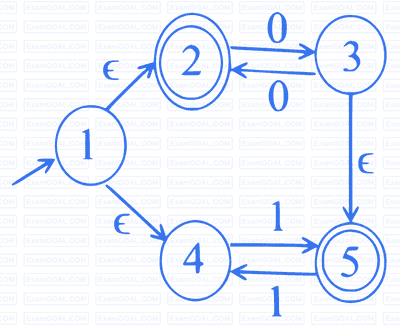Which one of the following regular expressions is equivalent to the language accepted by the DFA given below?

Let M be the 5-state NFA with ε-transitions shown in the diagram below.

Which one of the following regular expressions represents the language accepted by M?
Consider a context-free grammar $G$ with the following 3 rules.
$S \rightarrow aS, \ S \rightarrow aSbS, S \rightarrow c$
Let $w \in L(G)$.
Let $n_a(w)$, $n_b(w)$, $n_c(w)$ denote the number of times $a$, $b$, $c$ occur in $w$, respectively. Which of the following statements is/are TRUE?
Let L1 be the language represented by the regular expression b*ab*(ab*ab*)* and L2 = { w ∈ (a + b)* | |w| ≤ 4 }, where |w| denotes the length of string w. The number of strings in L2 which are also in L1 is __________.